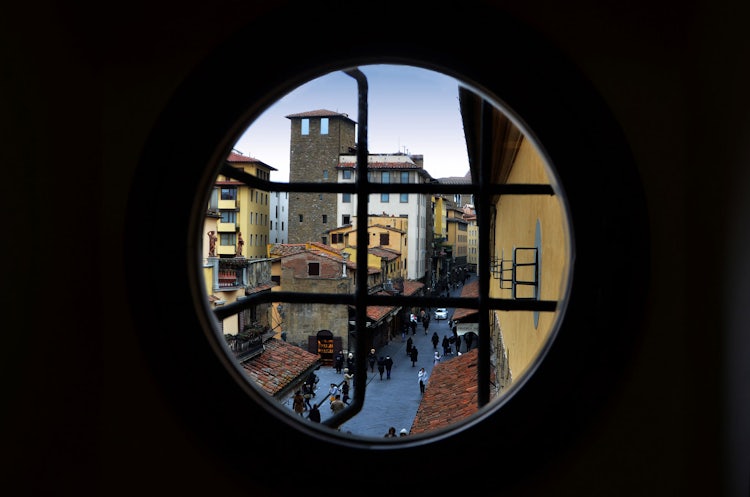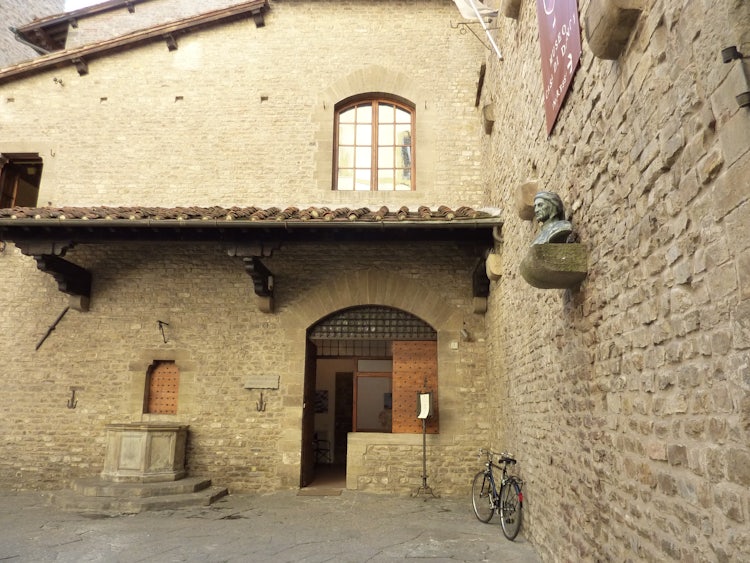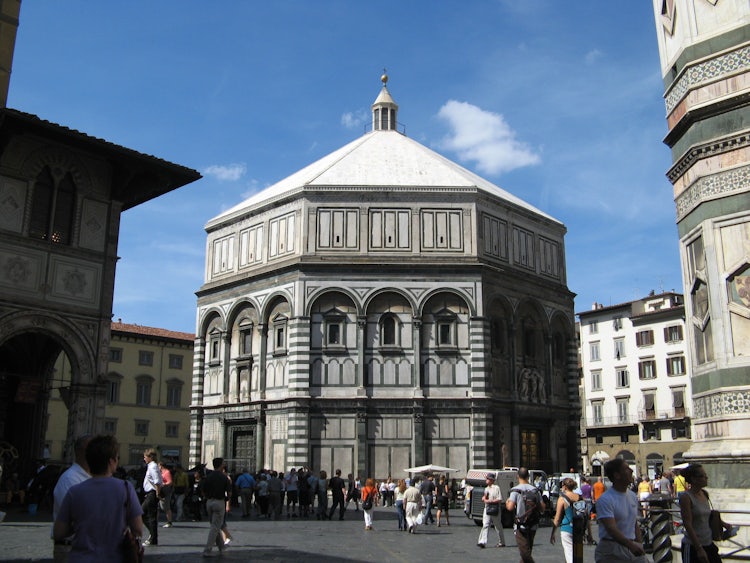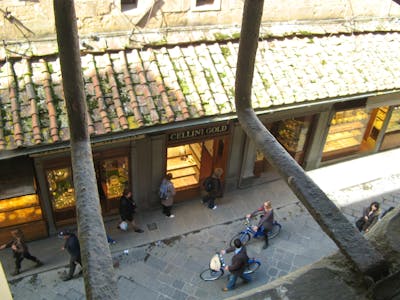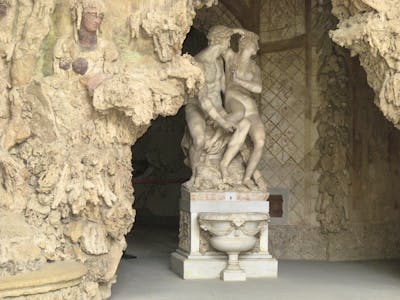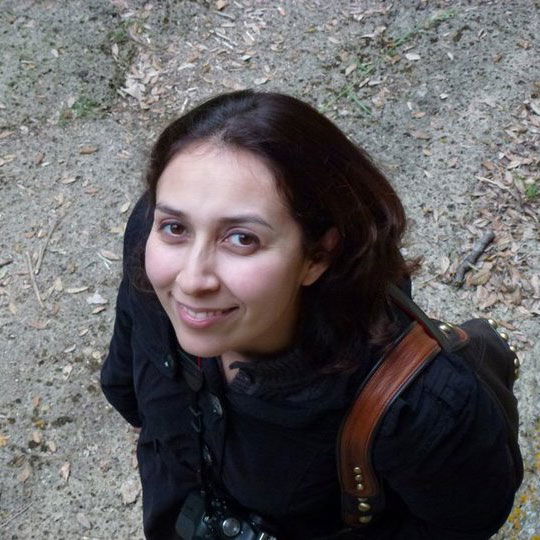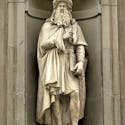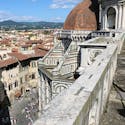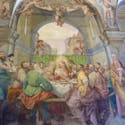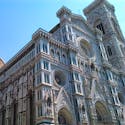"If you know where to look, Florence is paradise."
World Premier October 8, 2016
Florence - Teatro dell’Opera
Another Great Reason to Visit Florence!
The entire cast and Ron Howard were in Florence October 6-8, 2016 as they officially presented the new film starring Tom Hanks & Felicity Jones, Inferno.
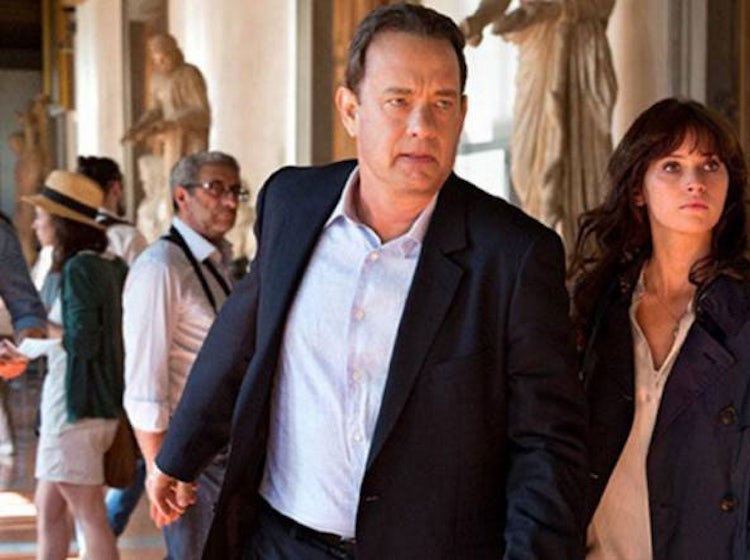
This phrase in Dan Brown's most recent best-seller, Inferno, offers the key to visiting the city right alongside professor Robert Langdon as he sets off in search of the threat hidden within Botticelli's "map of Inferno".
With Inferno, you'll delve into the mysteries of ancient Italy, Florence's medieval past during the times of Dante and of the Renaissance.
If you enjoyed Brown's "Da Vinci Code" and "Angels and Demons", you'll enjoy following the professor in "Inferno" along with our visual itinerary below to visit some of Florence's main monuments.
Are you ready to come along?
Start at Porta Romana and the Art Institute

The itinerary the professor follows in Florence starts in Porta Romana, the stone gateway along the wall that surrounded Florence for centuries built in 1326. While most of the city's perimeter walls were destroyed in the late 19th century, Porta Romana is one of several gates left standing around the city, and to this day, traffic enters the city passing through the deep tunnel gate.
Six major roads converge in front of the doors, where a roundabout filters traffic while at its center is a massive statue by Pistoletto of a woman facing away from Porta Romana and another one on her head, facing back.
To the right side of Porta Romana, you'll find an entrance into the Boboli gardens definitely worth using instead of heading to Palazzo Pitti as there never is a line here. Further to the right is a large gate that leads to the State Institute of Art, a startlingly beautiful entry road with massive oak trees arched gently in to form a canopy that frames the yellow structure in the distance. Lots of green and benches make this a perfect area to have a picnic if weather allows.
The yellow building, currently undergoing restoration, was commissioned, not by the Medici as Brown writes in the book, but by the king of Italy when Florence was capital from 1865 to 1871 as the riding stables for the royal court, housed right next door in the Palazzo Pitti. The building has been the Institute of Applied Arts since the 1920s and in 2011 became a liceum of art.
It's greatest treasure is the collection of over 3000 plaster casts of some of the most important sculptures and works of art in Florence and Italy. The "gipsoteca" is not open to the public but can be visited by calling and booking ahead of time. If you have some extra time in Florence, the collection of works by Michelangelo, Raffaello and other masters is a great way to see many works by each artist all in one place!
The Grand Boboli Gardens

In the novel, our professor, along with his adventure partner Sienna, are fleeing toward the city center and decide to head over the wall by the Istituto d'Arte into the Boboli Gardens. You don't have to do that, remember there is an entrance into the gardens right by Porta Romana! ;-)
Despite the danger of being followed, the professor is not immune to the beauty of his surroundings. One of the most beautiful Italian gardens in the world, the Boboli offers visitors canopied wooded paths, large ponds, fountains, an amphitheater and sculptures all over the garden. The likes of Niccolò Tribolo, Giorgio Vasari and Bernardo Buontalenti contributed to this walkable masterpiece.
The pair makes their way across the acres of garden - enjoying the views of Florence and its duomo along the way - to finally arrive at the Grotta del Buontalenti, a singular work of art that brings together architecture, paintings and sculpture. The grotta is divided into 3 rooms, with dagger-like stalagtites and oozing features from the wall that make the stone look like it is melting. Among this, animals and human figures can be seen: recognize Michelangelo's Prisoners? They were here originally, but now are protected within the Accademia museum and what you see here are copies.
The grotto is closed off by a gate and we can catch a glimpse of the lovers in the second chamber and of the Bathing Venus in the farthest room inside. Try to imagine that in the days of the Medici, the walls of the grotto were covered in water and a fish bowl sat on the hole at the very top to create water shadows on the walls. It must have been an impressive setting!
The Boboli Gardens, along with the Pitti Palace, is the most noble area of the Oltrarno, the left bank of the Arno river. The Pitti Palace and Gardens house the treasures of the Medici, Lorraines and royal families that have lived and dominated over Florence for centuries so a visit is definitely recommended.
The Vasari Corridor, Walking over People's heads
After five centuries of history, the Vasari Corridor also becomes the escape route for Robert and Sienna in "Inferno". The Corridor is the secret hallway commissioned to Giorgio Vasari by Cosimo dei Medici to provide a direct way to get from Palazzo Vecchio to the residence of Palazzo Pitti without danger along its streets. A small exit door can be found right by the Grotto del Buontalenti but the corridor obviously goes all the way and ends in the Pitti Palace.
For us common visitors to Florence, it is impossible to visit the Corridor as our two adventurers do, that is, in the opposite direction! But we can certainly follow it from outside as it heads and crosses over Ponte Vecchio and arrives at the Uffizi Gallery, to finally end in Palazzo Vecchio (check the images above).
The Corridor is a marvelous piece of architectural genius: commissioned in 1565 by Cosimo de' Medici to celebrate the wedding of his son Francesco I with Joanna of Austria, the passageway was completed in just 5 months! It is almost a kilometer long and where you don't see it, it is because it goes right through the private palaces and tower homes that already existed. You can follow the corridor by searching for the round windows that mark its whole extension, as it passes in front of the Church of Santa Felicita, over and onto the shops on Ponte Vecchio and then along the Arno in a splendid elevated archway that ends in the Uffizi.
The Vasari Corridor is the richest and most exclusive visit you can do in Florence: open to very small groups, guided tours from the Uffizi take visitors back into a period full of intrigue and murder plots while admiring an extraordinary amount of works of art (a self-portrait collection started in the 15th century). You also enjoy peeks below onto the people of Florence, unaware of your presence above and into the Church of Santa Felicitò, where the Medici had a balcony built so that they could attend mass without the need to walk through the streets to get to church!
The Vasari Corridor is generally closed to the public, but it can be visited as part of a private group tour: you can visit the Vasari Corridor with one of these organized tours.
The Magnificent Palazzo Vecchio
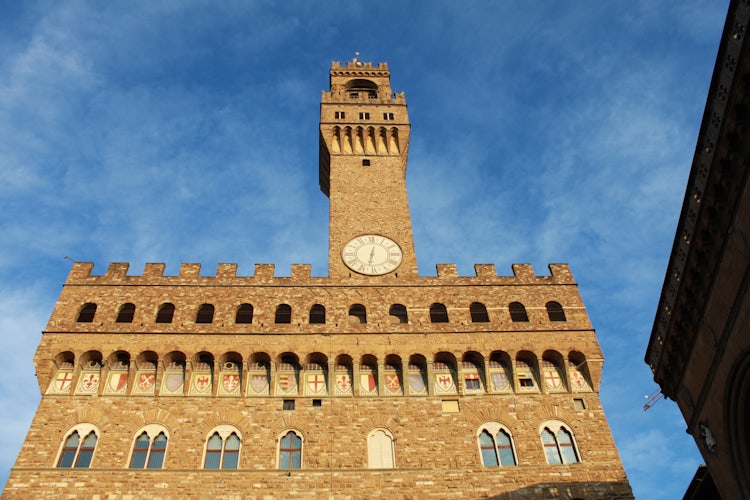
The majestic Salone dei Cinquecento, or Hall of the Five Hundred (which hosted the major council of Florence), was built by Pollaiolo and enlarged and modernized by Vasari to look like it does today. Professor Langdon and Sienna dash through Palazzo Vecchio in search of additional clues, visiting the hall, then Francesco I's "studiolo" off to one side of the hall and then the stupendous Hall of Maps on the 2nd floor.
The pair are being chased, making them take a "new" exit route using the secret routes worked into the palace by the Medici, from behind a panel in the Hall of Maps and eventually onto the magnificent space over the Salone dei Cinquecento where the huge wooden trusses and beams that hold the spectacular works of art on its ceiling suspended. They don't go into Bianca Cappello's "secret room" (but the police do!) from which it was possible to observe the meetings of the great council below without being seen.
This room and the path the pair takes to escape the palace in a secret corridor and exit built into the walls of Palazzo Vecchio can be visited by anyone who takes the "Secret Passages" tour offered by Palazzo Vecchio as well as the new tour offered since the novel came out called "The Places of Inferno" which directly takes you to visit all of the spots visited in the novel (cost €12, book the tours here). Either these or any of the other tours offered by Palazzo Vecchio, especially ones designed for children, are highly recommended!
Medieval Florence with Dante
Our intrepid heroes manage to escape Palazzo Vecchio through a small side door onto Via della Ninna (look up to see the start of the Vasari Corridor as it crosses over the street), they dash into Piazza della Signoria and off into the streets that most retain their medieval aspect in Florence. This is where the Casa di Dante, or Dante's House, is located as well as the church where his muse, Beatrice Portinari, is buried.
Dante's House is indeed not the original home where he lived in, as the city has seen constructions go up and down in the past centuries in this area. Documents however do exist that prove the family home did sit somewhere in this area so, in 1865, Florence celebrated the 600th anniversary of Dante's birth by setting up this museum. Dedicated to the poet as well as to medieval Florence, if you have the time and an interest in history, a visit is highly recommended. Our pair just visit the bookshop (since they are in a hurry) and then stop in the nearby church before heading on to Piazza del Duomo but we also recommend a quick stop at the nearby Badia Fiorentina.
The spiked peak of the Badia Fiorentina's bell tower can best be admired from a distance - many in Florence see it, sticking up in the sky right by the Bargello, but as it isn't a major monument mentioned in most guides, most don't realize what it is. The Badia makes an appearance at the start of the book (won't say more in case you haven't read it yet) but don't worry, not much is said about it. The Badia was the first monastery in Florence, founded in 978. Sitting just across from Casa del Dante, the monastery was also Dante's favorite church.
The monastery belongs to the Evangelical Fraternity of Jerusalem order today. It is still alive and active, with services throughout the day. The church can be visited, including the Cloister of the Oranges, on Mondays between 3 and 6pm. One of the most interesting aspects of this church is that the original church's front faced west towards Piazza San Martino near the Casa di Dante, so the back of the church was on Via Proconsolo. The church today can be entered from Via Proconsolo or from Via Dante Alighieri. If you're in Florence, try to discover where the front of the old church is: it's still there!
The Baptistery and the Gates to Paradise
Our professor and companion finally reach the "paradise" Brown has been alluding to since the very start, with their arrival at the eastern doors of the Baptistery created by Lorenzo Ghiberti, called the Doors to Paradise by Michelangelo himself. A crucial part of the novel takes place inside in one of the most important historical and religious spots in Florence and, understandably, changes course to the pair's adventure in Florence.
Unfortunately, most visitors don't realize the marvelous treasures inside the Baptisery, often stopping below the majestic cathedral to admire its facade, the dome and bell tower and the Baptistery's golden doors without ever entering (remember those doors are copies, the originals are in the Duomo museum). Thankfully, all of the monuments in Piazza Duomo can now be visited with a single pass (which costs just 10 euros) which will gain you access to the top of the Duomo, to the bell tower, the Opera del Duomo museum and to the Baptistery. We highly recommend visiting them all!
Step inside through the North Doors entrance (Langdon enters through the Golden doors but we can confirm they are only opened on special religious occasions and not to normal visitors) to admire the magnificent octagonal structure with its golden mosaics that represent the various levels of Paradise and Hell, very similar to the descriptions found in Dante's Divine Comedy, who was, like all Florentine citizens until the last century, baptized here.
As mentioned, a surprising discovery is made inside the baptismal font which takes the professor and Sienna off to Venice... but we won't give out any more details!
Lots more to see in Florence!
If you're reading the novel, we hope our itinerary has helped you travel right along with our heroes as they cross Florence in just a few hours. If you haven't yet, we recommend picking up the book to learn a lot of interesting details of Florence's past in an easy, light manner. See our other suggested itineraries here.
If you're visiting Florence soon, we hope that this virtual tour through Florence has served to offer you a taste of what you'll soon be seeing in person, keeping in mind that there is so much more that you will be able to see... since you won't be fleeing from anyone! ;-)
Enjoy your tour through Florence!
